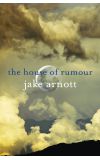
23 Jul 2012 10:31:56
While all novelists are called upon to fictionalise reality, Jake Arnott stands out as a dark prince of confabulation. In books such as The Long Firm and He Kills Coppers he yoked together the actual and the invented with such verve and authority that it was often difficult to know where history stopped and his stories began.
Both those novels were set in or against the London underworld of the 1960s and 1970s, a cliche-rich milieu from which Arnott unearthed fresh nuggets of subversion and transgression. Yet with his potent blend of forensic excavation and renegade imagination, it seemed odd that Arnott should restrict himself to London crime.
His last book, The Devil's Paintbrush, duly ventured further afield, into the occult world of Aleister Crowley and Belle Epoque Paris. Though a pleasing digression, it lacked the unsettling verisimilitude of its predecessors. But instead of retreating to familiar territory, Arnott has returned with his most ambitious work to date.
The House of Rumour is a novel that seeks to fold time and space into a series of linked situations: Rudolph Hess's 1941 flight to Scotland; early rocket science; the British wartime intelligence service, and, once again, Crowley's paranormal myth-making and sexual libertarianism. There are walk-on parts for Hess, Crowley, Cyril Connolly, Ian Fleming, Jim Jones (of drink-the-Kool Aid cult-death infamy) and L Ron Hubbard; but the plot focuses on a transsexual with a detachable penis, a closeted British pop singer and an American pulp science-fiction writer named Larry Zagorski.
I say "plot", but it's a multiple-narrator jumble of ideas, outlandish theories and literary spoofs loosely tied to a stolen classified file on Hess's mysterious wartime "peace" mission to Britain. As though appealing to one of his conspiracy-fed characters, Arnott floats the possibility of narrative convergence, the idea that all these apparently disparate people and random events are secretly connected. The notion of a shadowy organising force is further suggested by the structure – 22 chapters that follow the 22 major arcana cards in the tarot deck. Like much else in this teasingly entertaining book, it's a clever conceit, a game of smoke and mirrors.
The novel opens with Zagorski recalling how he came by the confidential document that was intelligence officer Sir Marius Trevelyan's personal account of the Hess affair. It was stolen from Trevelyan, Zagorski explains, by a transvestite prostitute named Vita Lampada (itself a literary reference to Sir Henry Newbolt's famous poem). This being Arnott, we learn, soon enough, that Lampada is based on Vikki de Lambray, a real transvestite prostitute who died in suspicious circumstances in August 1986.
The book could almost work as a compendious excuse to exhume neglected figures from the past, because Arnott assembles a fascinating cast of misfits who have been consigned to the margins of history. There is Jack Parsons, the rocket scientist and Crowley devotee who set up a hedonistic commune in California in the 1940s, before accidentally blowing himself up. And Katharine Burdekin, the British feminist who in 1937 wrote Swastika Night, a work of visionary dystopia that has been compared to Nineteen Eighty-Four. But this novel is more than a collection of obscure biographies; it's also about timing and dislocation, and how life and history rest on what sci-fi readers may know as a "Jonbar Hinge", a point at which the future could have taken a different path.
Perhaps most of all, it's a book about the uncertainty of writing. In mid-career, Zagorski publishes "a cycle of 22 interconnecting stories structured around the trump cards in the tarot deck". The Village Voice hails it a "meta-fictional masterpiece", while the New York Times calls it "a confused and self-indulgent mess".

